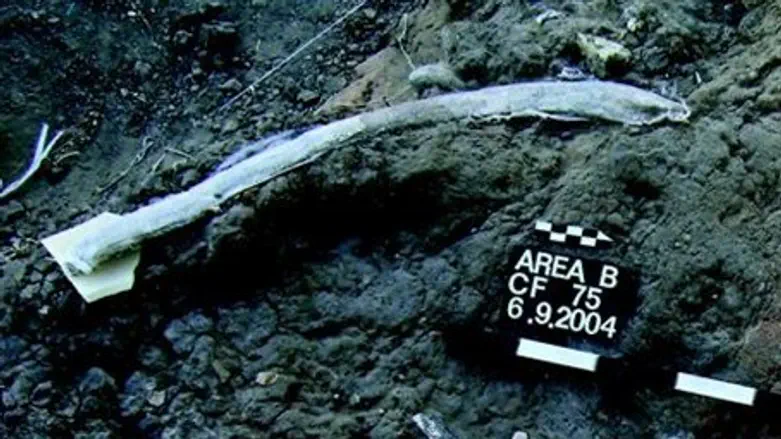
Among elephant remains some 500,000 years old at a Lower Paleolithic site in Revadim, in southern Israel, Prof. Ran Barkai and his graduate students Natasha Solodenko and Andrea Zupanchich of Tel Aviv University's Department of Archaeology and Ancient Near Eastern Cultures recently analyzed "handaxes" and "scrapers," universally shaped and sized prehistoric stone tools, replete with animal residue.
According to the university, the recently published research represents the first scientifically verified direct evidence for the precise use of Paleolithic stone tools, in processing animal carcasses and hides.
"There are three parts to this puzzle: the expansion of the human brain, the shift to meat consumption, and the ability to develop sophisticated technology to meet the new biological demands. The invention of stone technology was a major breakthrough in human evolution," Prof. Barkai said. "Fracturing rocks in order to butcher and cut animal meat represents a key biological and cultural milestone.
"At the Revadim quarry, a wonderfully preserved site a half-million years old, we found butchered animal remains, including an elephant rib bone which had been neatly cut by a stone tool, alongside flint handaxes and scrapers still retaining animal fat. It became clear from further analyses that butchering and carcass processing indeed took place at this site."
Through use-wear analysis — examining the surfaces and edges of the tools to determine their function — and the Fourier Transform InfraRed (FTIR) residue analysis which harnesses infrared to identify signatures of prehistoric organic compounds, the researchers were able to demonstrate for the first time direct proof of animal exploitation by flint tools.
"Archaeologists have until now only been able to suggest scenarios about the use and function of such tools. We don’t have a time machine," Prof. Barkai said. "It makes sense that these tools would be used to break down carcasses, but until evidence was uncovered to prove this, it remained just a theory."
While the question of their function and production remained unanswered until now, there was little doubt that the handaxe and scraper, found at prehistoric sites all around the world, were distinct, used for specific purposes. By replicating the flint tools for a modern butchering experiment, and then comparing the replicas with their prehistoric counterparts, the researchers determined that the handaxe was prehistoric man's sturdy "Swiss army knife," capable of cutting and breaking down bone, tough sinew, and hide. The slimmer, more delicate scraper was used to separate fur and animal fat from muscle tissue.
The research was done in collaboration with Drs. Stella Ninziante Cesaro and Cristina Lemorini of La Sapienza, University of Rome, and Dr. Ofer Marder of Ben-Gurion University of the Negev.